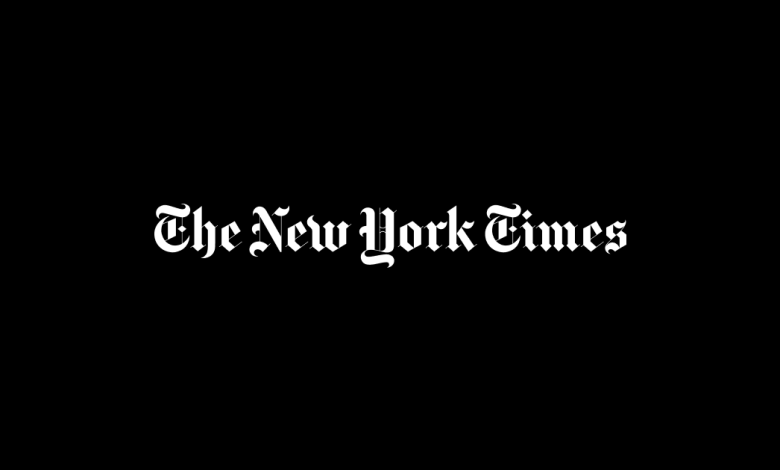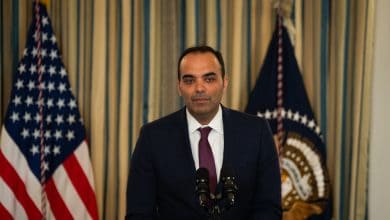Inflation Holds Roughly Steady Ahead of Fed Meeting

Inflation data released on Tuesday showed that price increases remained moderate in November, the latest sign that inflation has cooled substantially from its June 2022 peak. That’s likely to keep the Federal Reserve on track to leave interest rates unchanged at its final meeting of the year, which takes place this week.
The Consumer Price Index came out just as the Fed began its two-day gathering, which will conclude with the release of an interest rate decision and a fresh set of quarterly economic projections at 2 p.m. on Wednesday. Jerome H. Powell, the Fed chair, is then scheduled to hold a news conference.
Central bankers have embraced a recent slowdown in price increases, and Tuesday’s data largely suggested that inflation remains lower than earlier this year. Overall inflation climbed 0.1 percent on a monthly basis, making for a 3.1 percent increase compared to a year earlier.
That was cooler than 3.2 percent in October, and it is down notably from a peak above 9 percent in the summer of 2022.
But some of the report’s underlying details could keep Fed officials wary as they contemplate what to do next with interest rates. Investors expect central bankers to begin lowering borrowing costs within the first half of 2024, though officials have been trying to keep their options open.
After stripping out volatile food and fuel to give a clearer sense of underlying inflation trends, so-called core inflation climbed more quickly on a monthly basis. And a closely watched measure that tracks housing expenses also climbed more quickly; that measure is called “owners’ equivalent rent” because it estimates how much it would cost someone to rent a home that they own, and economists have been expecting it to decline.
“It reinforces this idea that it’s going to be a bumpy road to disinflation,” said Blerina Uruci, chief U.S. economist at T. Rowe Price. “The Fed cannot cut interest rates too soon in the face of resilient services inflation.”
Core inflation was up by 4 percent compared to a year earlier, holding steady from October. That pace remains well above the roughly 2 percent pace that was normal before the onset of the pandemic.
Many economists expect inflation to continue coming down in 2024.
That’s partly a function of monetary policy. Fed officials raised rates sharply between March 2022 and this summer in a bid to slow the economy, hoping to cool demand enough to wrestle inflation lower. As it has become pricier to borrow to make big purchases, the housing market has cooled somewhat and the car market has calmed.
Policymakers have also gotten help from the supply side of the economy. Shipping routes clogged during the pandemic but have since cleared, and factories have caught up to demand, easing shortages for some key products. The return to normal has helped to push goods prices lower in recent months.
And as workers return to the labor market, filling open jobs, wage gains have been cooling — which could suggest that labor-heavy services industries will stop raising prices as quickly.
Fed officials have now held borrowing costs steady for several months as they try to assess whether they have adjusted policy enough to return price increases to a normal pace over time.
“They should be very encouraged,” Neil Dutta, head of economic research at Renaissance Macro, said following the report. “Inflation is falling much more quickly than they’d expected, and the new number doesn’t really change that.”
Still, central bankers have been hesitant to declare victory at a time when inflation is improving but remains elevated. Economists expect them to maintain that cautious approach this week, even though many think that the Fed’s next move will be an interest-rate cut.
“It would be premature to conclude with confidence that we have achieved a sufficiently restrictive stance, or to speculate on when policy might ease,” Mr. Powell said during a recent speech.
Investors think that borrowing costs could come down as soon as the first half of 2024, based on market expectations, though continued economic momentum or stubborn prices could delay that.
Ms. Uruci said that the stickiness in housing costs in Tuesday’s report likely “pushes any expected cuts to later in the year.” Policymakers will not want to reverse course at a moment when price increases might get stuck at a still-elevated rate.
Inflation has surprised forecasters repeatedly since 2021 by cooling only to flare back up, making forecasting how quickly it will fade now a challenge.
“It’s hard to be confident after the last few years,” said Laura Rosner-Warburton, senior economist MacroPolicy Perspectives.




